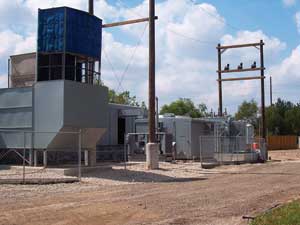May 2008
 View Full Print Edition
View Full Print EditionBusiness Briefs
Columns

Trends Emerge in Unofficial Biodiesel Survey
By Jessica Sobolik
Featured
Biodiesel Production Trends Survey 2008
By Craig A. Johnson
For the first time Biodiesel Magazine asks producers exactly how much biodiesel is being produced. The results of our comprehensive survey create an intriguing picture of the industry. Not all producers took our phone calls, but those who did spoke loudly.

Understanding the Post-Injection Problem
By Ron Kotrba
Many diesel engine manufacturers have implemented what's called post-injection, the introduction of fuel late in the combustion cycle, as part of an advanced control strategy to reduce emissions. Biodiesel Magazine looks at how post-injection of biodiesel blends facilitates dilution of engine oil while interacting with oil additives to potentially accelerate engine wear.

A Man on a Mission
By Sarah Smith
When President George W. Bush proclaimed biodiesel the most promising renewable fuel, one that could help meet his 36 billion-gallon goal, he was likely unaware that this mandate would set off a debate now taking place across America: don't build here or anywhere near here.
Will RINs be the Next Environmental Currency?
By Anduin Kirkbride McElroy
Renewable Identification Numbers are becoming increasingly important not just for people in environmental compliance or accounting, but also for those in marketing, investing and sustainability.
The 'FOG' is Lifting
By Kris Bevill
San Francisco is on its way to becoming an even brighter shade of green by starting a program to collect the waste fat, oil and grease (FOG) that clog city sewers and cost taxpayers millions, and turning it into biodiesel to fuel the city's fleet.

Gaining Traction
By Susanne Retka Schill
The nation's underground mines are turning to biodiesel to reduce diesel particulate matter levels to help comply with tighter air quality limits.

Gallons of Megawatts
By Jerry Kram
Most think of biodiesel as a motor fuel. But it is much more versatile and can drive steamships and, notably, gas turbines. A group in Texas has been pushing the frontiers of biofuel technology to bring electricity to the suburbs of Houston.

Can Biodiesel Power Haiti?
By Eric Kroh
The Western hemisphere's poorest nation faces the same dire problems with fuel cost that the rest of the world encounters. But for once Haiti may have a head start. Its farmers already work with a native plant called jatropha.
Earthrace begins voyage using sustainable fuels
By Timothy Charles Holmseth







